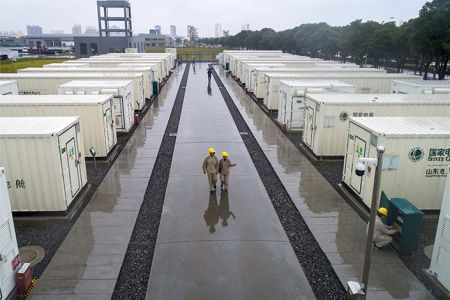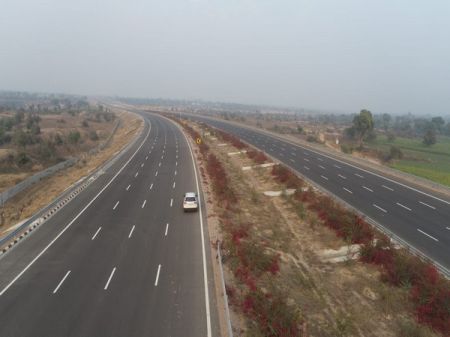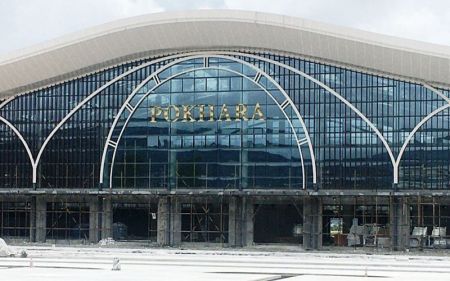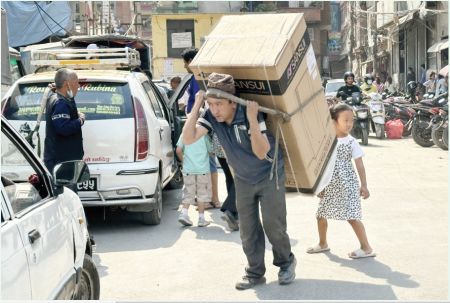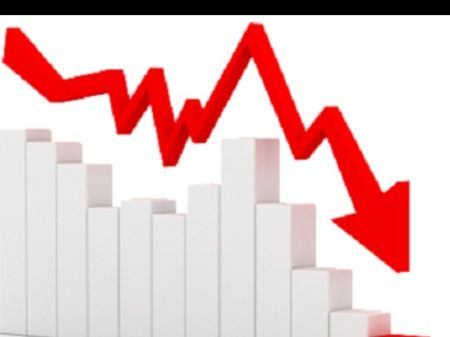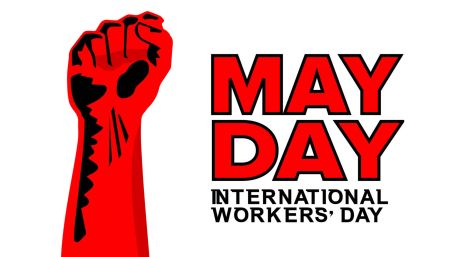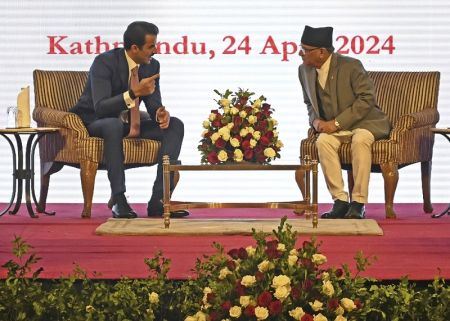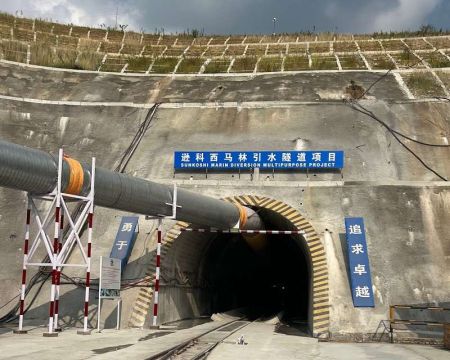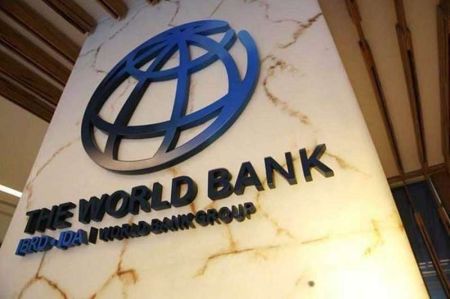--By Gaurav Aryal
.jpg) |
| Bal Krishna Shrestha Chairman, Hama Group |
Hama Group was not built in a day. The group developed through rigorous planning and hard work of its ChairmanBal Krishna Shrestha. Though belonging to a lineage of traders,who have been in the trading business for several generations, Shrestha laid the foundation of the group on his own. His family inspired him to dream and to work hard to materialise them. He envisioned the group and till date actively continues to plan its future, along with his partners
Shrestha’s family was in the garment business for five generations when he learned business basics. However, the learning process for him was not as smooth as butter. Being the first person in the Shrestha family to get educated, he was criticised and questioned about his formal learning and education by his seniors. His parents were involved in retailing of garments imported from India. The store at Makhan of Kathmandu,established by his great-great-grandfather,is still in operation.
While Shrestha was pursuing his graduate degree, his uncles used to ask him the worth of his studies as his pursuit would only land him as an employee. And, it pinched Shrestha deep and was determined to have a business of his own without getting any financial support from his family. Consequently he completed his B.Com.,joined government serviceas a Section Officer and completed M.Com., and Masters in Economics without any financial assistance from his family members.
Start-up Business
While in public service, he sensed the need and demand for development goods such as steel, cement, galvanised sheets, pipes and other goods to address the needs of an emerging and developing Nepal.But, to materialize such vision one needs capital, and during those days all he had with him was education and trust of people around him. He borrowed some money from his colleagues and started a hardware store at Teku along with three partners.This marks the inception of Hama Group.
Shrestha had started teaching at a college and during the same time he was transferredto National Planning Commission. There, he learned much more about development process. While he was busy with his job, his partners looked after the store and he used to join them after office hours.
Shrestha says that business performed way better than he had imagined initially. “We all worked hard and we wall were dedicated and honest to our work. And, we kept the fire in us hot,” he says. While the business of hardware sales was doing well, he started importing goods from China and selling here.
Impediments
Shrestha had ordered goods from China for the third time in 1977. Unfortunately, goods were stolen at Calcutta Port. He says that incident made a loss of Rs 5 million to the company.“That did not discourage me. I did not lose anything. I just lost what I had earned,” he shares. He recalls that he sold everythinghe had, to payback bank loans. Additionally, dealers and suppliers with whom he had been working denied supplying goods.
This unfortunate event did not discourage him, but forced him to start from the scratch to bounce back into business. After being refused of goods delivery by existing dealers and traders, he took it as a challenge and decided to produce steel products.But, starting a factory was not free of hurdles. Though financing was challenging Shrestha says that money is not a problem for a working person. He acquired operational license of Hama Steel in 1988 and started the factory by borrowing loans from banks.
Venture Expansion
After the success of steel company, the group started production of various other products through its specific companies such as Allied Industries, Hama Wires, Hama Tech and factories producing water pumps and pipes. The group now has a cement factory in its pipeline.
Similarly, Shrestha says that the group has recently upgraded its Hama Steel factory for the third time. The factory, started in 1988, was upgraded to fully automated system in 2000 through an investment of Rs 250 million. Now the factory is fully computerised. Shrestha claims that Hama Steel is probably the only steel factory in Nepal to be fuly computerised. He says that the production through the new system will begin next month. The group has invested Rs 480 million for the latest upgradation.
The factory has an installed production capacity of 400 tonnes a day when operated for 16 hours. According to Shrestha, the capacity will be even more if the factory can be operated for 20 hours. He adds that the new system will also help reduce the cost of production.
Quality Promises
The group has never compromised with the quality offerings. Shrestha says that the company never uses low quality billets for producing steel products. “Our products meet the highest quality standards and have been used by corporate houses, embassies, government agencies and the general public,” says Shrestha. Hama brand has been a trusted name by national and international projects operating in Nepal. US Embassy is one of them along with Russian and Japanese projects that have used Hama products in their construction projects.
The Roadmap
Shrestha sees everlasting needand demand for development goods. He believes that new business possibilities and new market will be created once political problems start getting resolved. He says that domestic industries would be encouraged if the government’s provision of using local products for public procurement is materialised..
The group is dedicated to take its companies to the next level in its area of specialisations. Shrestha is content over the progress made by the group so far. As a part of business expansion, the group has also invested in service industry, particularly in health, education, banking and insurance sectors.
The group has plans to establish a hotel soon in partnership with an international hotel chain. Once the recent upgradation comes into form, Shrestha says that his group will concentrate on new ventures. He reveals that the group is also planning factories for melting steel and wire drawing.
The group has plans to set up a cement factory that will be producing cement under its brand name Hama. Currently, HamaTech and Shalimar brands of cement are being produced by the group in partnership with other investors from the business fraternity. Shrestha says that the new factory will come into operation within a year.Similarly, energy is also one of the sectors of interest for the group. The group has a 4.5 MW Maikhola hydropower project in its portfolio and another new project in its pipeline.
The group has invested over Rs 1 billion in its various ventures and registers an annual turnover of Rs 5 billion and has been annually adding Rs 500 million to the state coffers through taxes and other payments. Shrestha says that the turnover for the next year is targeted at Rs 10 billion.
| Naming of Hama Bal Krishna Shrestha, Chairman of Hama Group borrowed the name Hama for his steel company from the Port of Yokohama from where Japan used to import raw materials for steel production and export finished goods. Hama was a lucky charm for Shrestha. Similarly, Shrestha who considers himself a devotee of Harati Mata linked the brand name to his devotion too. Likewise, Shrestha says that HA in Newari means seed and MA means fruit. He says that if seeds are good, the harvest of that fruit is eventually high. Management Shrestha and his group have always had belief in professional management and professionalism as corporate philosophy. Independent management teams of each of the group’s 10 companies looks after the daily management and human resources of their respective companies. The HR department looks after issues related to 450 employees working in various companies of the Hama Group. Shrestha says that employees are his assets and the company has been able to make them happy and satisfied. Likewise, the promoters do not have to look after the daily management and functioning of any of the companies. Shrestha gets updated about the daily progress through periodic meetings and through the Internet.He says that corporate culture is well developed in the group. CSR Corporate Social Responsibility (CSR) activities are highly prioritised by the group. Shrestha believes in creating benefits to larger number of people and the society rather than just making profits through business. As a part of CSR activities, the group provided scholarships to 14 needy students under SOS from Far Western Region. Similarly, the group has been providing education to children of employees of the group for free. Shrestha shares a plan to establish an elderly home in the name of his parents. Out of its social service fund, the group has invested in hospital projects too. Major Milestones of the Group 1988: Establishment of Hama Steel 1995: Hama Steel received the Nepal Standard (NS) mark 1997: Hama Steel upgraded production capacity 1998: Hama Wires established 2000: Hama Steel further upgraded production capacity and received ISO 9001:2000 certification for excellent quality management system 2001: Hama Steel received NS Quality Award 2004: Hama Steel started production of HAMA TMT Re-bars 2005: Started production of HAMA-500 Re-bars 2007: TQM Activities were initiated to maintain quality management. 2008: Hama Iron and Steel started production of Super Grip Re-bars (SG Re-Bars) 2013: Upgraded Hama Steel into a fully computerised system |







